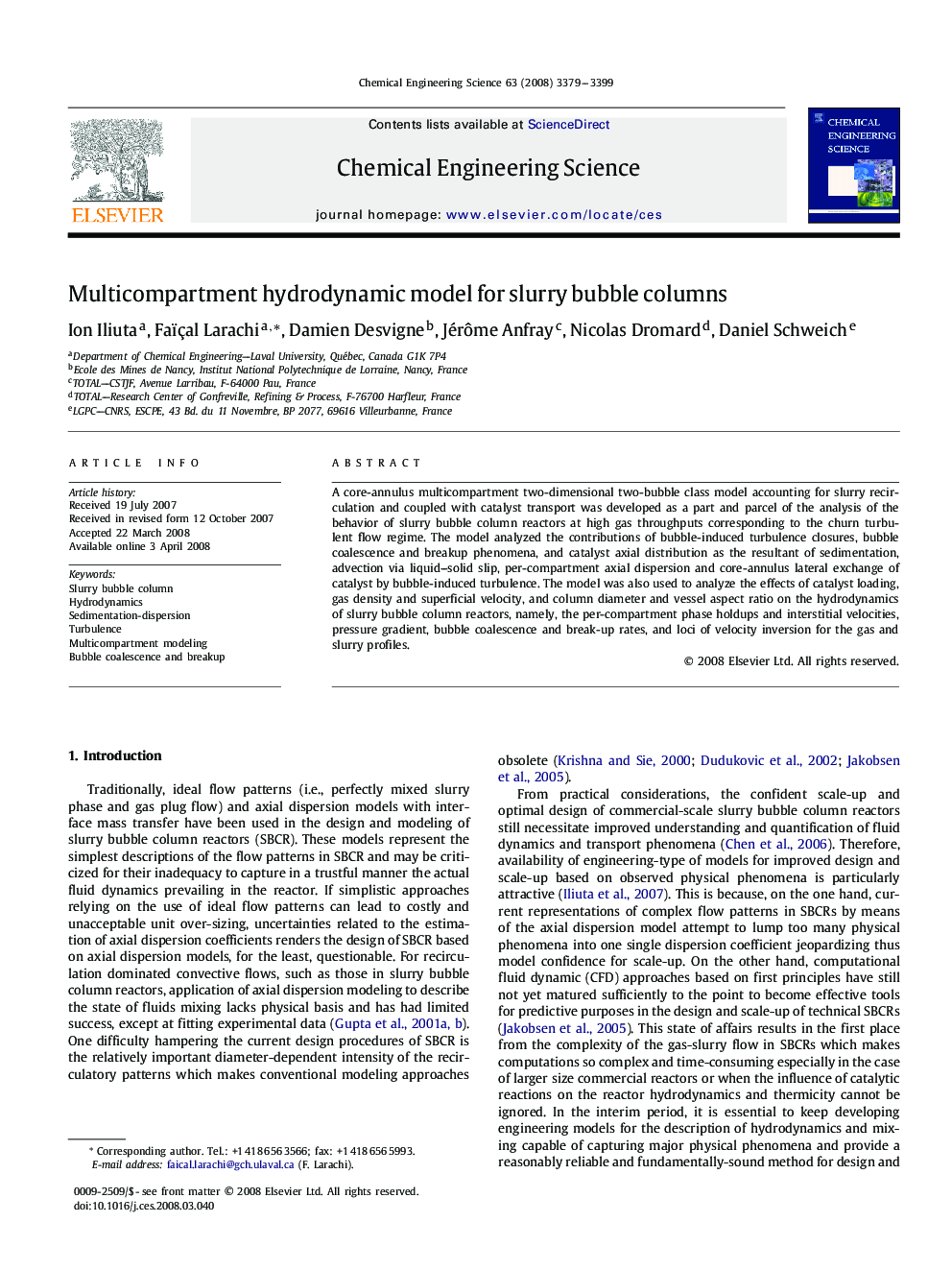| Article ID | Journal | Published Year | Pages | File Type |
|---|---|---|---|---|
| 158525 | Chemical Engineering Science | 2008 | 21 Pages |
A core-annulus multicompartment two-dimensional two-bubble class model accounting for slurry recirculation and coupled with catalyst transport was developed as a part and parcel of the analysis of the behavior of slurry bubble column reactors at high gas throughputs corresponding to the churn turbulent flow regime. The model analyzed the contributions of bubble-induced turbulence closures, bubble coalescence and breakup phenomena, and catalyst axial distribution as the resultant of sedimentation, advection via liquid–solid slip, per-compartment axial dispersion and core-annulus lateral exchange of catalyst by bubble-induced turbulence. The model was also used to analyze the effects of catalyst loading, gas density and superficial velocity, and column diameter and vessel aspect ratio on the hydrodynamics of slurry bubble column reactors, namely, the per-compartment phase holdups and interstitial velocities, pressure gradient, bubble coalescence and break-up rates, and loci of velocity inversion for the gas and slurry profiles.
